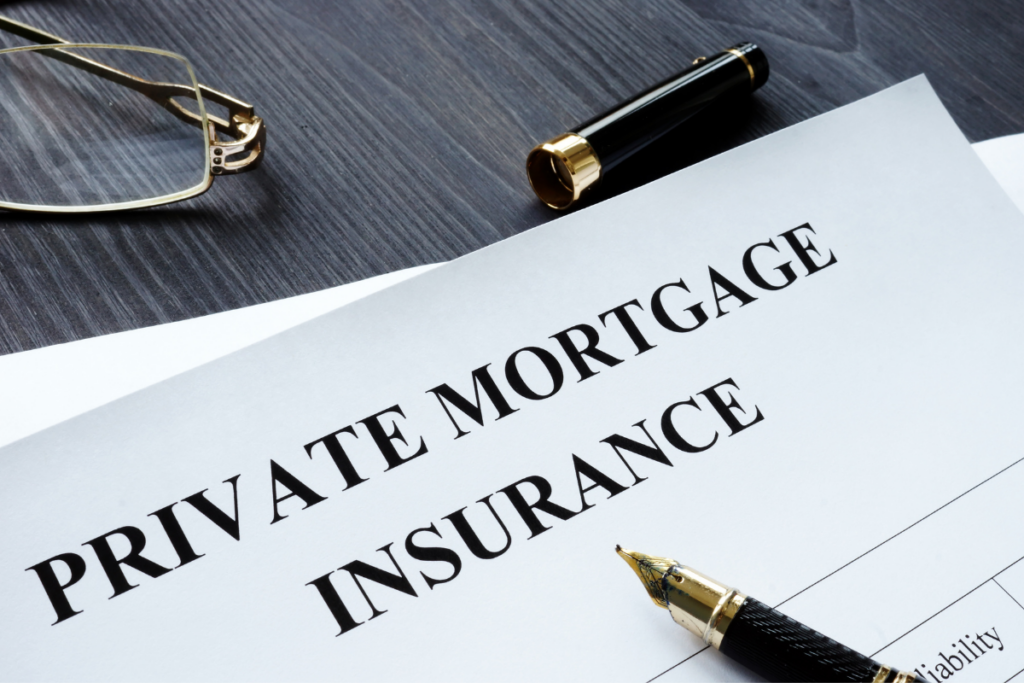
Mortgage insurance, referred to as PMI, is a monthly pain in the budget. On the other hand, it makes buying your first home possible when you don’t have a big down payment.
So what is mortgage insurance, exactly? Will you need it? How much does it cost? The cost can definitely affect your homebuying budget. We’ve done our best to anticipate all the questions that might come up as you think about how much house you can afford and start shopping for loans.
Here’s what we’ll cover:
- What exactly is PMI (and MIP)?
- Will you need mortgage insurance?
- How much does mortgage insurance cost?
- Can PMI go up?
- Can you pay the whole thing up front and be done with it?
- Can you avoid mortgage insurance?
- What about a “piggy-back” loan?
- What about “lender-paid mortgage insurance”?
What exactly is PMI (and MIP)?
Mortgage insurance protects the lender if you can’t repay your mortgage. The idea is that the less of your own money you put toward your home, the more likely you are to default on the loan and end up in foreclosure. So if your down payment is low, the lender wants to cover their risk with insurance. Reasonable enough, right?
The lender arranges for mortgage insurance, so you don’t have to worry about where to get it, but you’re the one who has to pay for it.
PMI, which stands for private mortgage insurance, applies to conventional loans. Meaning loans not backed by the government. When people use the acronym, they’re often talking about mortgage insurance in general, including MIP — mortgage insurance premium.
MIP is a version of mortgage insurance that’s required for some government-backed loans, such as FHA loans. FHA loans have low down payment requirements, so they’re very popular with first-time homebuyers. Maybe you’re already considering one.
Will you need mortgage insurance?

It depends. Most conventional loans require PMI if your down payment is less than 20 percent. FHA loans, being low-down-payment by design, always require MIP.
In other words, alas, mortgage insurance is a fact of life for most first-time homebuyers. About 80 percent of us put down less than 20 percent, according to the National Association of Realtors’ 2017 figures. And more than 60 percent put down less than 6 percent. (No wonder down payment assistance is such a Thing.)
How much does mortgage insurance cost?
A couple thousand dollars a year is typical, spread across monthly payments. It’s conveniently folded into your mortgage payment. It can be higher or lower depending on the size of your down payment, your credit score, and the size of your loan.
Certain loan programs do offer reduced premiums, but in general, PMI will cost 0.3 percent to 1.15 percent of the original loan amount per year, with 1 percent being typical. Let’s say you’re buying a $200,000 home with $10,000 down, taking out a $190,000 loan with 1 percent in PMI:$190,000 x .01 = $1,900 in annual PMI
($1,900 ÷ 12 = about $158 in monthly PMI payments)
Yes, $158 a month! As you can see, you need to account for PMI when deciding how much house you can afford. Once you’ve paid off enough of the loan, though, you can get rid of PMI.
MIP is a bit more complicated, more expensive overall, and less flexible. It has two parts. First, unlike with PMI, there’s an upfront premium. This can be paid as part of your closing costs or be added to the loan (which means you’ll pay interest on the sum). Second is an annual premium that, like PMI, is spread over 12 monthly payments. The cost will vary depending on the loan term, the loan amount, and the initial loan-to-value ratio (a number lenders use to assess risk).
Currently, the upfront premium is running at 1.75 percent of the loan. If your down payment is less than 5 percent, the annual premium is .85 percent of the loan amount. For example, taking the same loan scenario we used above:$190,000 x .0175 = $3,325 in cash or financed
+
$190,000 x .0085 = $1,615 in annual MIP
($1,625 ÷ 12 = about $135 in monthly MIP payments)
Unfortunately, the only way to ditch MIP is to refinance into a conventional loan somewhere down the line. (That’s assuming you had a low down payment. If you put down 10 percent or more, MIP drops away after 11 years.) Yet that’s not too big a deal, since refinancing at some point is often just part of smart homeownership.
You can see why a conventional loan with PMI is often your best bet if you can qualify. But if you need the low down payment that a government-backed loan allows, well, MIP is what it is. Probably the one advantage MIP has over PMI is that it costs the same no matter what your credit score is, and just a little more if your down payment is less than 5 percent. Keep this in mind if your score and/or your down payment are on the low side.
Once you’re into the homebuying process, the cost of your mortgage insurance will be noted on two pieces of paperwork that the lender is legally required to give you:
- In the “projected payments” section of the loan estimate, which you get when you apply for a mortgage and is helpful for comparing loans before you commit
- In the “projected payments” section of the closing disclosure, which is a final summary of your loan and its terms
(We’ve got samples of both documents for you in our Tools section.)
Can PMI go up?
No, hallelujah! Once you’ve finalized your mortgage, what you pay for PMI and MIP can’t increase.
Can you pay the whole thing up front and be done with it?

Sometimes you can, if you get a conventional loan. If you expect to be in your home for a number of years, and your lender of choice offers this option, you might come out ahead. But of course you need to have the extra several thousand dollars in closing costs on hand.
Can you avoid mortgage insurance?
Probably not … but maybe, if you can get into one of a few special loan programs. The obvious best-case option is to put down 20 percent and get yourself into a conventional loan. Barring that rare-ish scenario:
- Some lenders offer options that waive PMI with as little as 10 percent down
- Some credit unions waive PMI for applicants who are strong on everything but the down payment
- Qualified veterans can sometimes get VA loans that are not only zero percent down, but also waive upfront fees
- Are you a doctor? Certain “physician’s loans” don’t require PMI
- A Bank of America partnership has created an “Affordable Loan Solution” mortgage for low- and moderate-income homebuyers that allows a low down payment without PMI
The thing to keep in mind with any program that supposedly waives PMI is long-term costs. Maybe there’s no PMI, per se, but is the interest rate higher instead? Is there some other upfront fee? For example, government-backed VA loans don’t require mortgage insurance, but in most cases you have to pay a “funding fee” either out-of-pocket or by rolling it into the loan. Sometimes, the trade-offs make sense. Sometimes, they don’t.
A homeownership advisor can help you zero in on special loans available in your area or according to your personal circumstances, calculate the real costs, and figure out the smartest option for your situation. We have a network of vetted homeownership advisors who are ready to help you.
What about a “piggy-back” loan?
Though common during the mortgage boom, this type of loan is rare now. It lets you avoid mortgage insurance by borrowing the money you need — usually at a higher interest rate — to make a 20 percent down payment. That’s right: you take out a second mortgage to make the down payment for the first. It’s another case where what looks like a good deal on the surface might not be in the end, so approach with care. To learn more, visit the CFPB.
What about “lender-paid mortgage insurance”?
As you can probably guess, the lender isn’t really paying the insurance. You are. This “LPMI” option isn’t that common. Not all lenders offer it, and you might not qualify for it. But FYI … Typically, LPMI lets you avoid a monthly PMI payment at the cost of a slightly higher interest rate, maybe a quarter to a half percent. This could come out to less than getting PMI separately, but not necessarily.
On the plus side:
- This option makes the most sense if your income is high — you might get a bigger tax deduction because of the higher interest rate. Mortgage interest is deductible, while at the moment PMI is deductible only if your income is on the lower side (see this TurboTax FAQ). Check with a tax expert, since tax rules are always changing.
- LPMI on a conventional loan might be less expensive than getting an FHA loan with MIP.
- You might qualify for a larger loan. Why? Although you might pay more in the long term, your monthly payment will probably be lower. Lenders pay a lot of attention to how much of your income is going toward debt.
On the negative side:
- Remember that you’ll be paying that higher interest rate for the life of the loan. It’s usually smarter to take the lower interest rate and deal with the PMI.
- You can cancel PMI when you reach 20 percent equity, but you can’t get out of the higher interest rate without refinancing.
Courtesy of Framework


